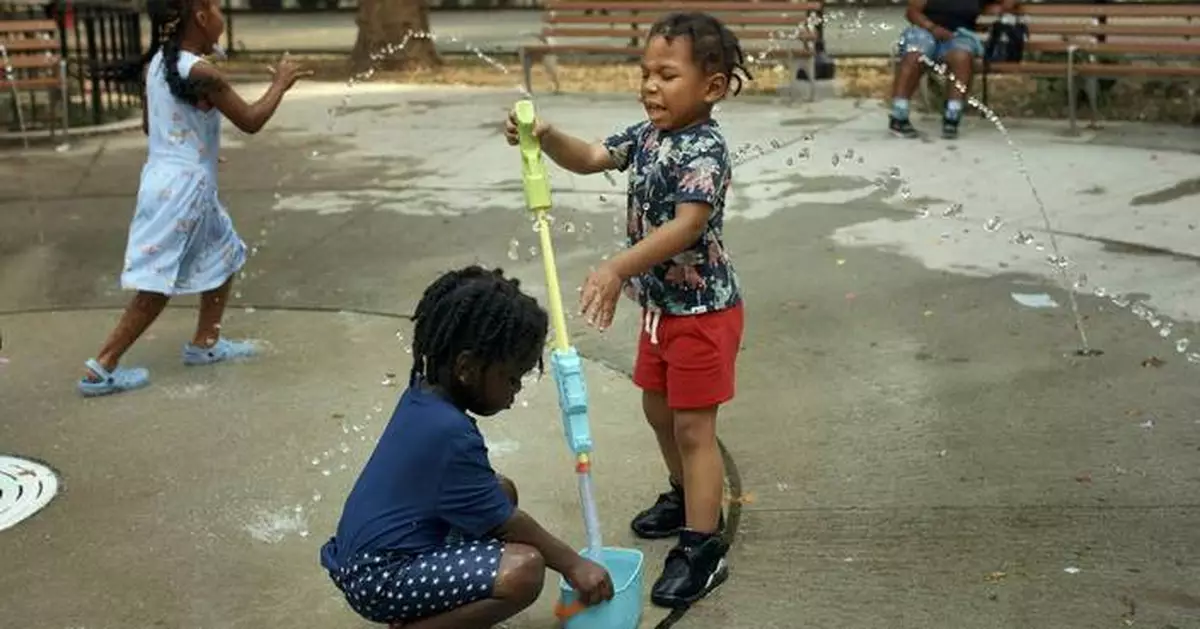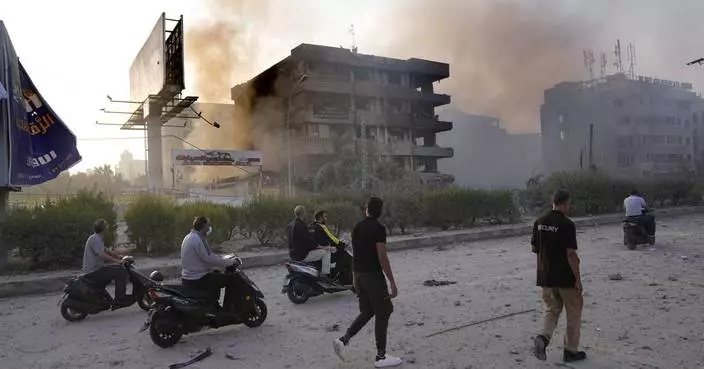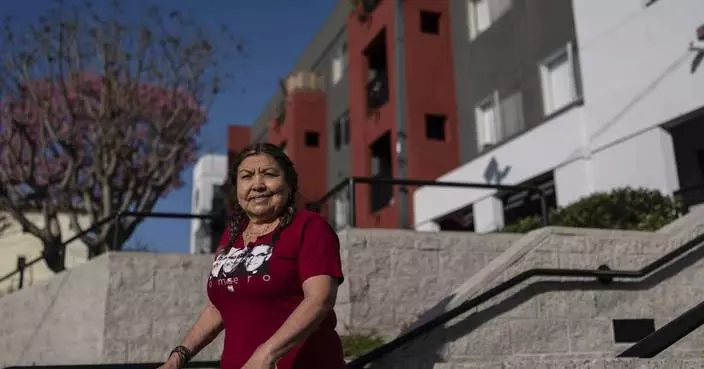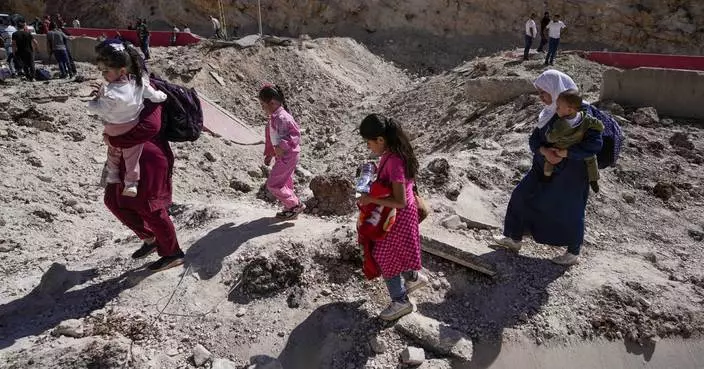NEW YORK (AP) — Ruben Berrios knows the scorching truth: When it comes to extreme heat, where you live can be a matter of life and death.
The 66-year-old lives in Mott Haven, a low-income neighborhood in New York’s South Bronx, where more than 90 percent of residents are Latino or Black. Every summer, the South Bronx becomes one of the hottest parts of the city, with temperatures 8 degrees (4.5 degrees Celsius) higher than on the Upper West and East sides — lusher, majority-white neighborhoods less than a mile away.
The heat isn’t just uncomfortable. It’s the top cause of weather-related fatalities nationwide, quietly killing an average of 350 New Yorkers each year, according to a city mortality report. As he took a break from his pool game at an apartment complex and older adult community center that serves as a designated cooling space, Berrios recalled a recent heat wave: “I lost two persons. They were close to me.”
Tens of millions of Americans are facing major heat waves, with temperatures consistently exceeding 90 degrees (32 degrees Celsius). But in big cities, the heat hits hardest for people of color and low-income residents. In New York, Black residents die from heat stress at double the rate of white residents.
“Only a quarter of New York City’s population is African American, but half of the deaths from heat are African Americans,” said Bill Ulfelder, executive director of the Nature Conservancy in New York. “So there is something wildly disproportionate.”
Mortality records from cities across the country have shown that heat kills along socioeconomic and racial lines.
In 1995, a deadly heat wave killed 739 people in Chicago. Most of the victims were poor, elderly and Black. Last year, Black people made up 11 percent of heat-related fatalities in Maricopa County, Arizona, which includes Phoenix, despite the fact that Black residents are just 6.8 percent of the county population.
During heat waves in Memphis, Tennessee, in the 1960s and 1980s, “there were people who were too poor to turn on their air conditioning" and died, said David Jones, a professor and historian of science at Harvard University. Some older adults in housing projects died at night because they feared burglars and were unwilling to open their windows or go outside to sit on their porches.
Environmental justice advocates trace this inequality back to decades of discriminatory housing policy, especially redlining — the 1930s government practice of rating neighborhoods’ investment worthiness using race as a determining factor and denying mortgages to minority buyers.
The labeling of minority neighborhoods as risky restricted resources for generations. It also starved those areas of parks and trees and affected how residents experience heat today. Comparing 1930s redlining maps with recent heat vulnerability maps by New York City’s health department reveals stunning correlations between how areas were categorized and where residents are most likely to die from heat.
“Those heat islands — they really are in those historically redlined neighborhoods, and that’s where the trees need to go,” Ulfelder said, referring to the urban heat island effect, where heavily paved areas with sparse vegetation trap more heat than outlying areas.
In the 1930s, the Home Owners’ Loan Corp. assigned Mott Haven a “D” grade, the lowest possible, for “hazardous.” For the adjacent neighborhood of Morrisania, the agency listed “Negro and Puerto Rican infiltration” and “obsolete homes” as “detrimental influences.”
Today, the South Bronx has some of the city’s lowest per-capita green space and is crisscrossed by power plants, waste stations and highways that cause severe noise and air pollution. Residents face high rates of infant mortality, cognitive issues, heart disease and asthma — so much so that Mott Haven is sometimes nicknamed “ asthma alley.” These conditions heighten heat vulnerability.
“Environmental racism in the South Bronx is in full view," said Arif Ullah, executive director of the environmental justice group South Bronx Unite.
Similar inequities have been identified across the country. In 2022, a Boston University analysis of 115 metropolitan areas from San Jose, California, to Louisville, Kentucky, and Hartford, Connecticut, found that air conditioning was less likely to be available in places with more residents who identify as either Black or African American or Hispanic or Latino.
In a bid to combat climbing temperatures, New York City Mayor Eric Adams activated the city’s heat emergency plan on June 18 for a week, designating hundreds of locations as air-conditioned facilities where residents can cool off during the day.
New York City Emergency Management Commissioner Zach Iscol said the city is distributing “cool kits” and indoor thermometers. He urged more funding for a program that helps low-income residents with heating and cooling needs. It has already received 21,000 applications this year.
For individuals with limited mobility, installing air conditioning — which actually raises outdoor temperatures — or reaching cooling centers may not be possible. In areas such as Brownsville, the South Bronx and East Harlem, residents also report that going outside to cool off means risking encounters with crime and drug activity.
Selene Olivaria, who has lived in the South Bronx for nine years, brought her two grandchildren, 9 and 4, to cool off in the fountains at Willis Playground. She said the opioid epidemic has resulted in drug users shooting up in the bathrooms. She worries that a child could pick up a needle.
Environmentalists say one solution to beating the heat in sprawling cities is planting more trees, creating green spaces like parks and meadows and covering rooftops with plants.
“Lower-income, communities of color, often immigrant communities — that’s where we need to be focusing,” Ulfelder said. Majority people-of-color neighborhoods have 33 percent less tree canopy than predominantly white neighborhoods. That can make them up to 13 degrees hotter (7 degrees Celsius) than neighborhoods 2 miles away.
Last fall, the New York City Council passed laws adding trees to the city charter's sustainability plans and requiring the city to develop an urban forest plan to increase tree cover from 22 to 30 percent by 2035.
On a recent sweltering day, Howard Shillingford, a 58-year-old janitor who grew up in the South Bronx, said he has “never felt the heat like this.” It's especially bad when he cleans school stairwells, which often have windows that don't open.
“Oh my god, those staircases are like ovens,” Shillingford said while reading news on a computer at Mott Haven’s public library, another cooling center.
Residents of heat-vulnerable neighborhoods are resourceful. Berrios keeps a wet towel on the back of his neck. Olivaria sprays her grandchildren with toy water guns. Jorge Morales, a 54-year-old graffiti artist and South Bronx native, showers twice a day and rinses his chihuahua, Buggsy, in the sink. Sometimes residents unscrew fire hydrants, letting water gush across sidewalks and into the streets.
“I don’t like the waste of water, but it’s what people here do. It’s a survival technique,” said Morales, who is Puerto Rican and Cuban, as he charged his phone at the same library.
Extreme heat is likely to become the new normal, experts say, and it must not be underestimated. Last year, the U.S. experienced the most heat waves since 1936.
“The way things are going, the heat waves in 2044 are going to be so much worse than they are now,” said Jones, the science historian. “This isn’t an anomalous heat wave. This is the taste of what’s to come.”
The Associated Press receives financial support from the Sony Global Social Justice Fund to expand certain coverage areas. AP is solely responsible for all content. Find AP’s standards for working with philanthropies, a list of supporters and funded coverage areas at AP.org.

Jorge Morales, 54, spends time at a library during a hot day, Friday, June 21, 2024, in the Bronx Borough of New York. Tens of millions of Americans are facing major heat waves, with temperatures consistently exceeding 90 degrees (32 degrees Celsius).(AP Photo/Andres Kudacki)
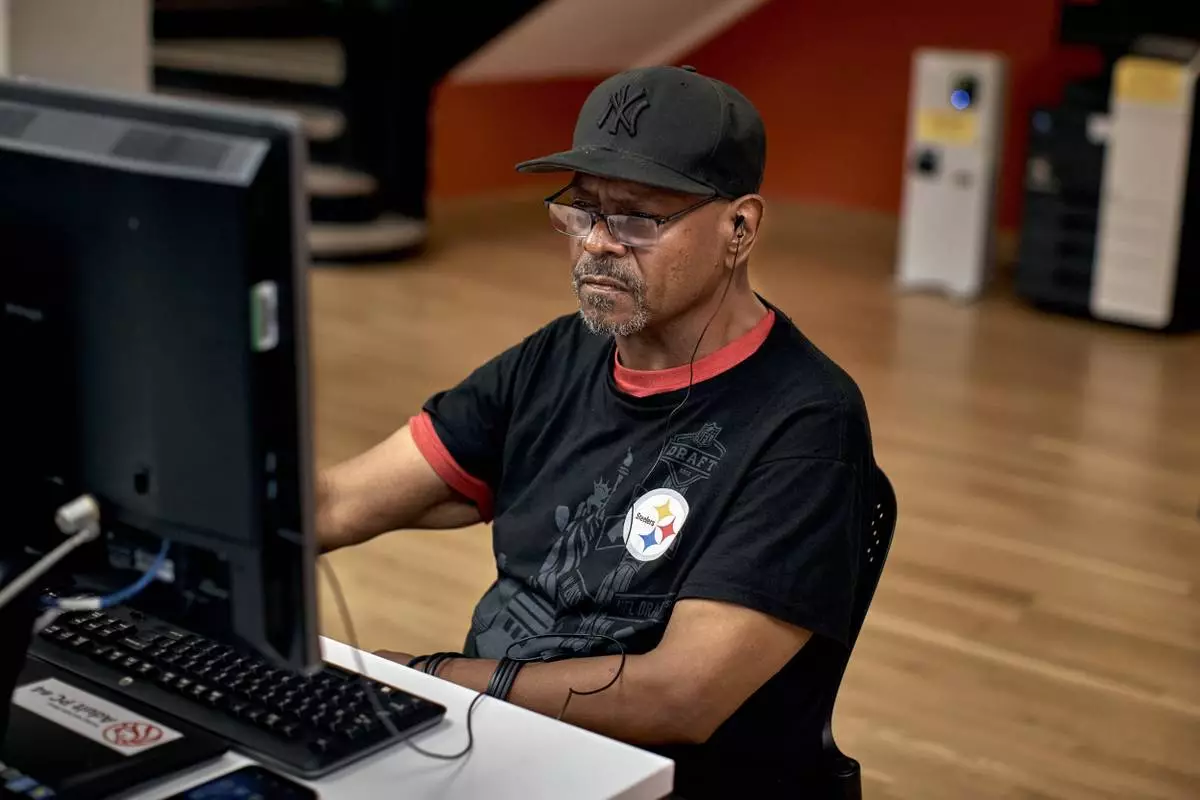
Howard Shillingford, 58, uses the computer as he spends time at a library during a hot day, Friday, June 21, 2024, in the Bronx Borough of New York. Tens of millions of Americans are facing major heat waves, with temperatures consistently exceeding 90 degrees (32 degrees Celsius). (AP Photo/Andres Kudacki)
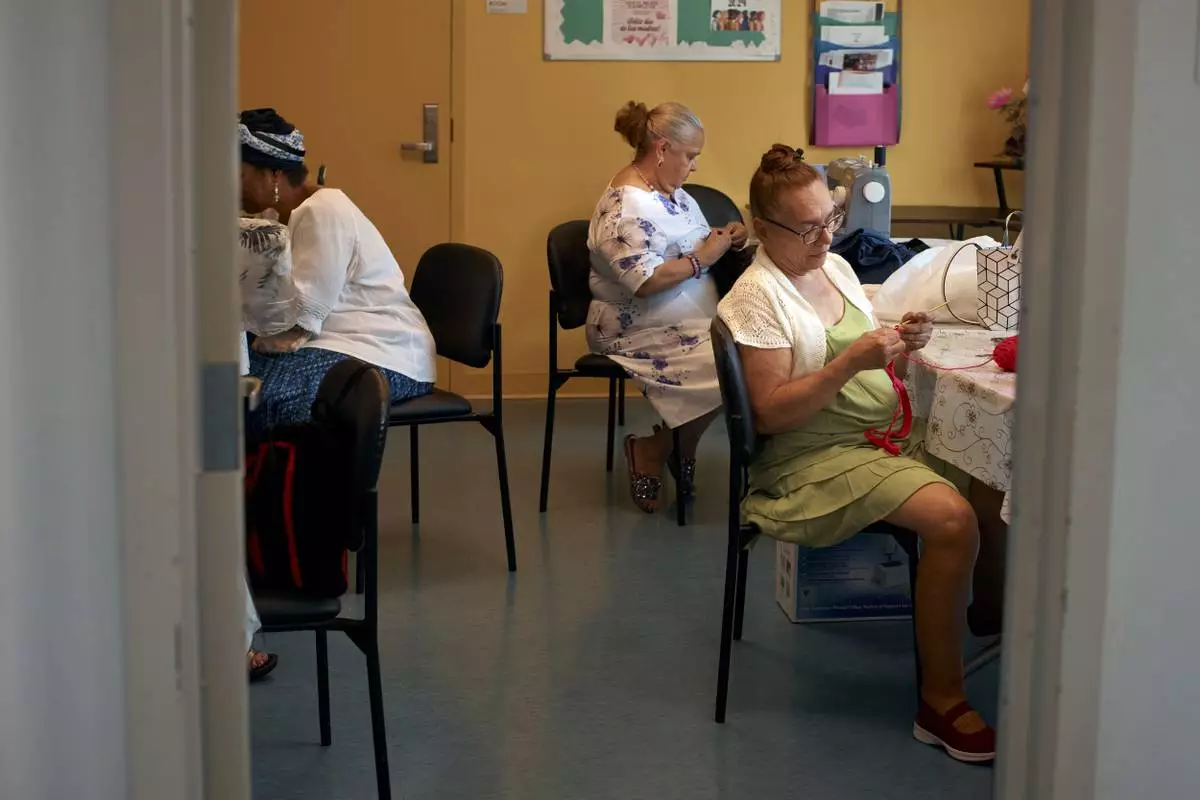
Women knit inside a cooling center during a hot day, Friday, June 21, 2024, in the Bronx Borough of New York. The heat isn’t just uncomfortable. It’s the top cause of weather-related fatalities nationwide, quietly killing an average of 350 New Yorkers each year, according to a city mortality report. (AP Photo/Andres Kudacki)

Elderly women play bingo at a cooling center during a hot day, Friday, June 21, 2024, in the Bronx Borough of New York. The heat isn’t just uncomfortable. It’s the top cause of weather-related fatalities nationwide, quietly killing an average of 350 New Yorkers each year, according to a city mortality report.(AP Photo/Andres Kudacki)
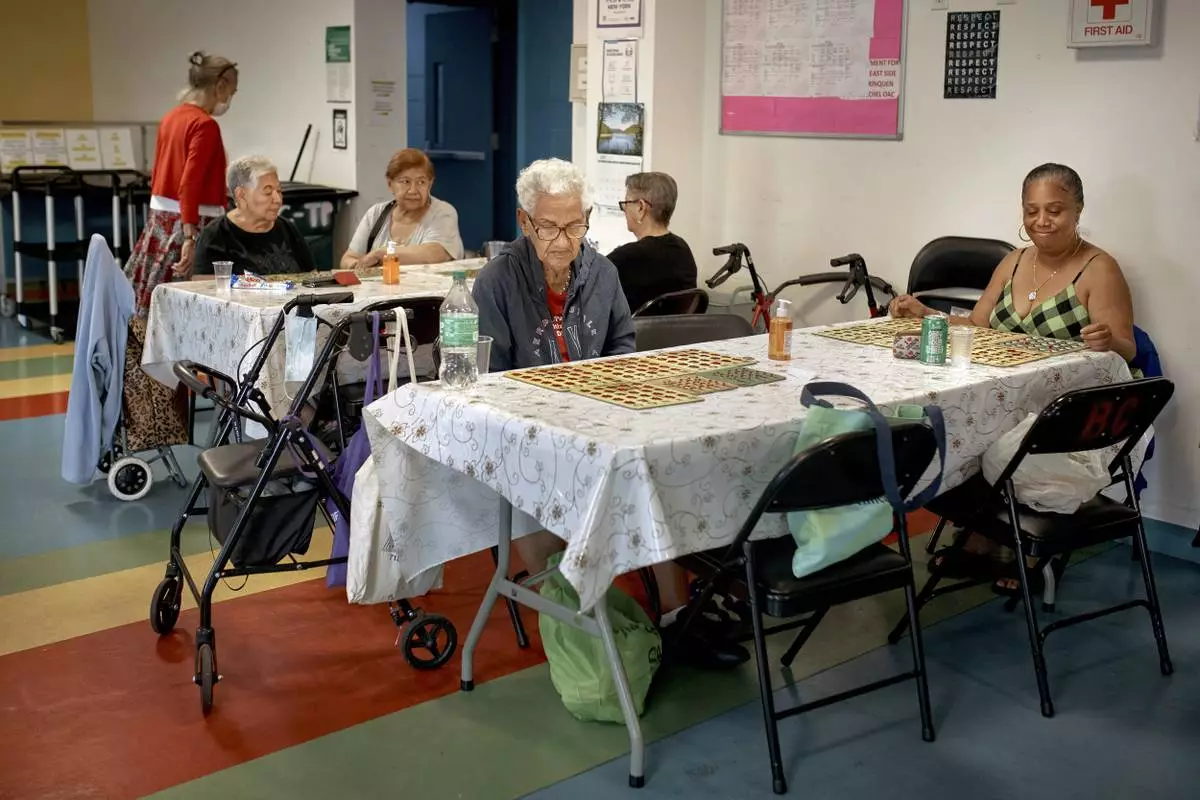
Elderly women play bingo at a cooling center during a hot day, Friday, June 21, 2024, in the Bronx Borough of New York. The heat isn’t just uncomfortable. It’s the top cause of weather-related fatalities nationwide, quietly killing an average of 350 New Yorkers each year, according to a city mortality report. (AP Photo/Andres Kudacki)
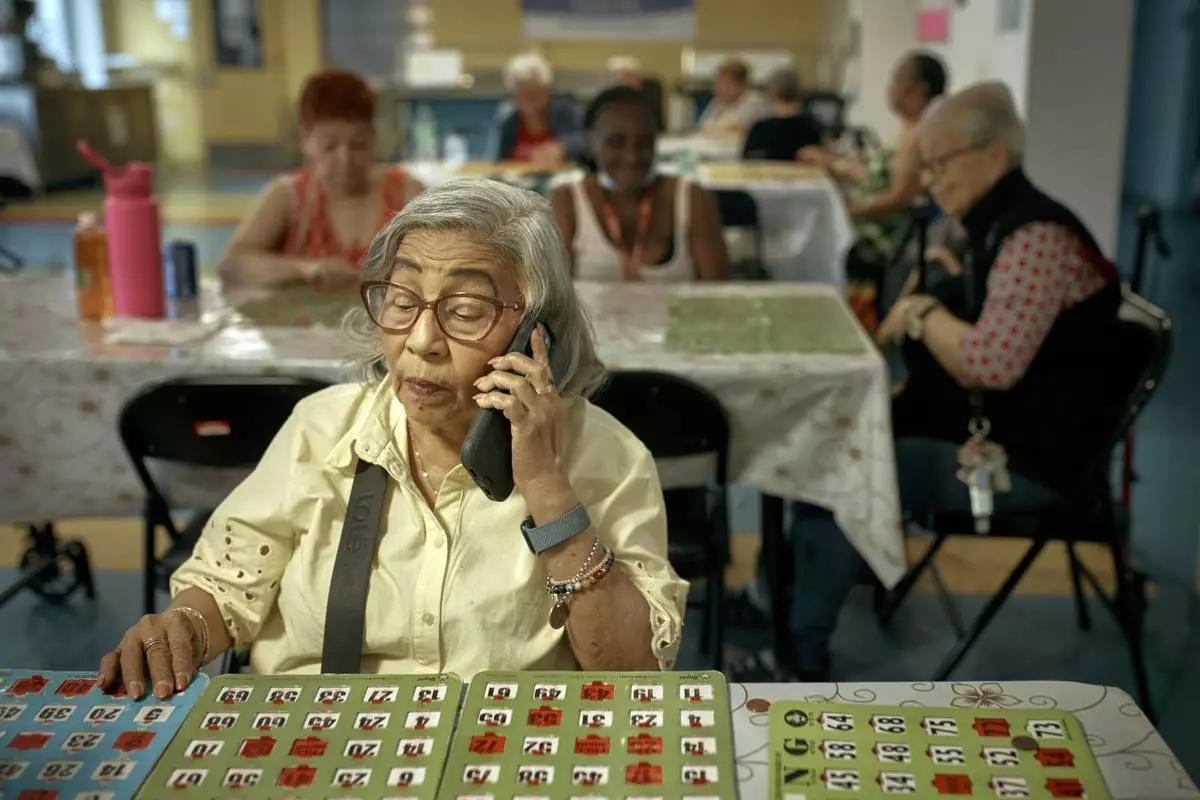
Elderly women play bingo at a cooling center during a hot day, Friday, June 21, 2024, in the Bronx Borough of New York. The heat isn’t just uncomfortable. It’s the top cause of weather-related fatalities nationwide, quietly killing an average of 350 New Yorkers each year, according to a city mortality report.(AP Photo/Andres Kudacki)

Empty chairs rest in the backyard of a cooling center during a hot day, Friday, June 21, 2024, in the Bronx Borough of New York. The heat isn’t just uncomfortable. It’s the top cause of weather-related fatalities nationwide, quietly killing an average of 350 New Yorkers each year, according to a city mortality report. (AP Photo/Andres Kudacki)
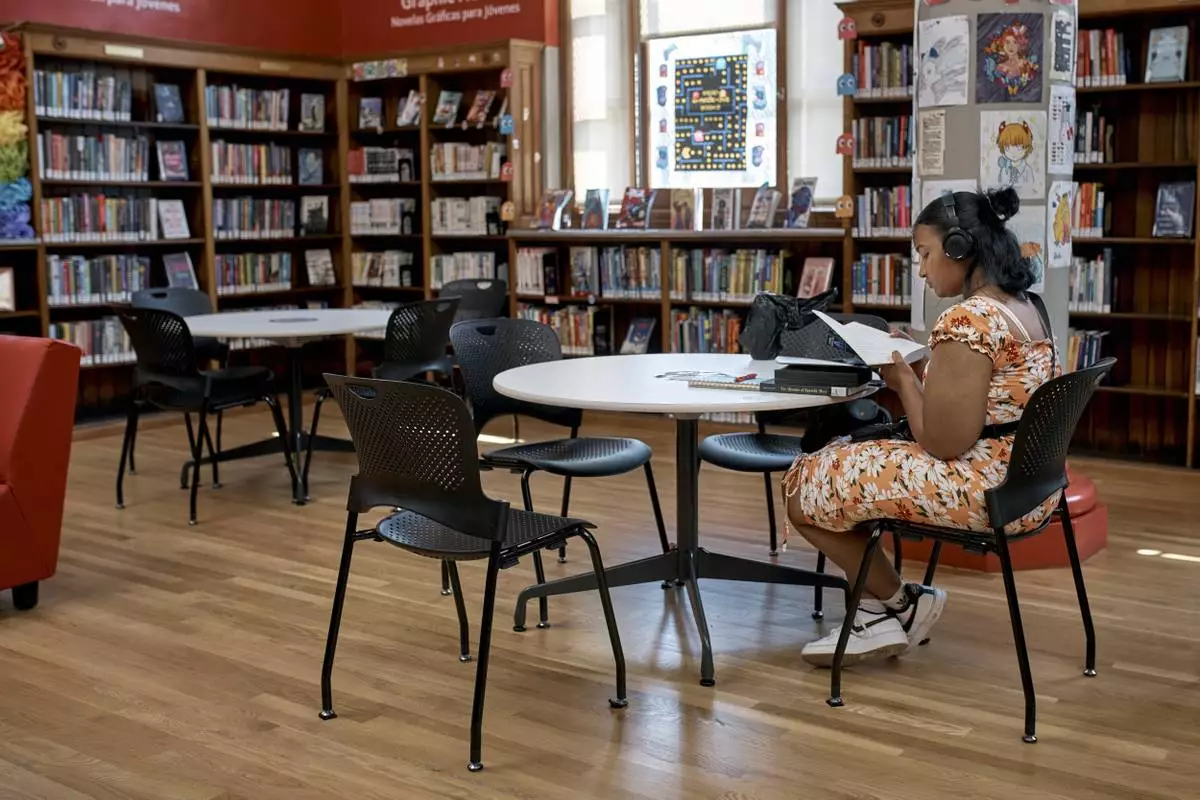
-A woman spends time at a library during a hot day, Friday, June 21, 2024, in the Bronx Borough of New York. Tens of millions of Americans are facing major heat waves, with temperatures consistently exceeding 90 degrees (32 degrees Celsius).(AP Photo/Andres Kudacki)
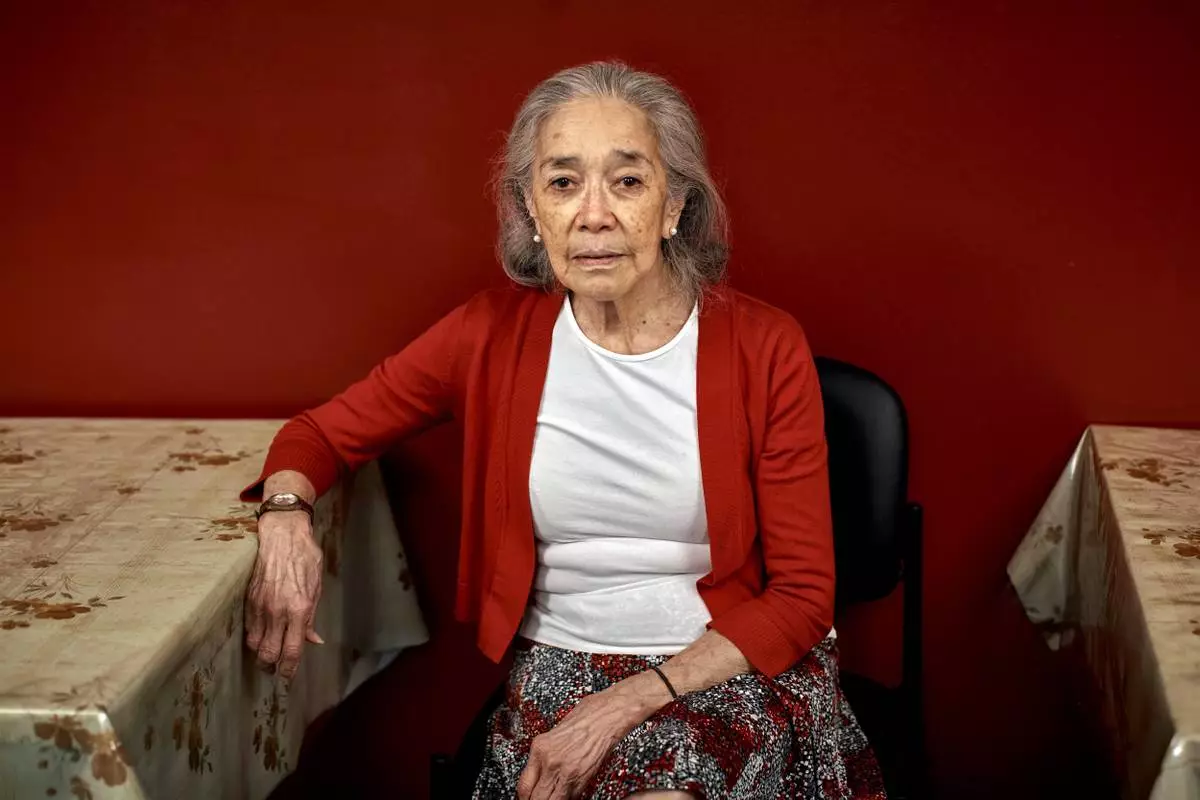
Jane Orendain, 84 poses for a photograph at a cooling center during a hot day, Friday, June 21, 2024, in the Bronx Borough of New York. The heat isn’t just uncomfortable. It’s the top cause of weather-related fatalities nationwide, quietly killing an average of 350 New Yorkers each year, according to a city mortality report.(AP Photo/Andres Kudacki)
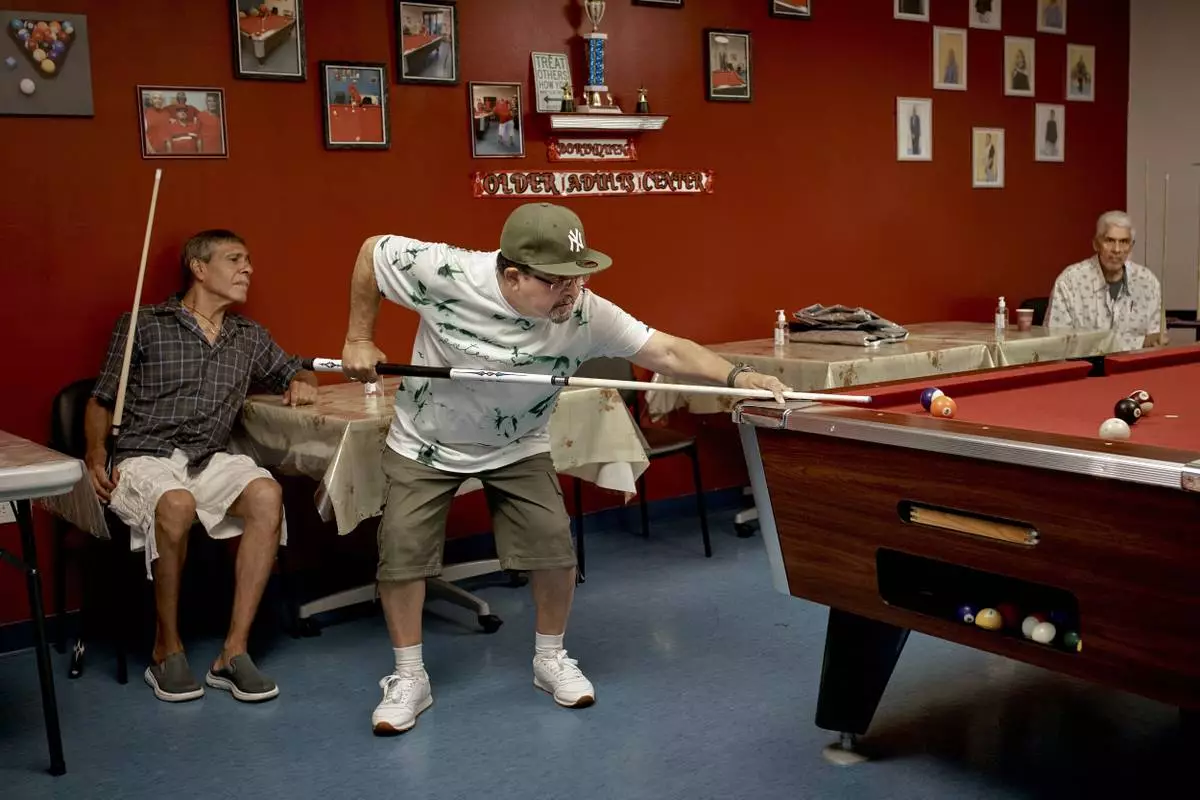
Elderly men play pool at a cooling center during a hot day, Friday, June 21, 2024, in the Bronx Borough of New York. The heat isn’t just uncomfortable. It’s the top cause of weather-related fatalities nationwide, quietly killing an average of 350 New Yorkers each year, according to a city mortality report.(AP Photo/Andres Kudacki)
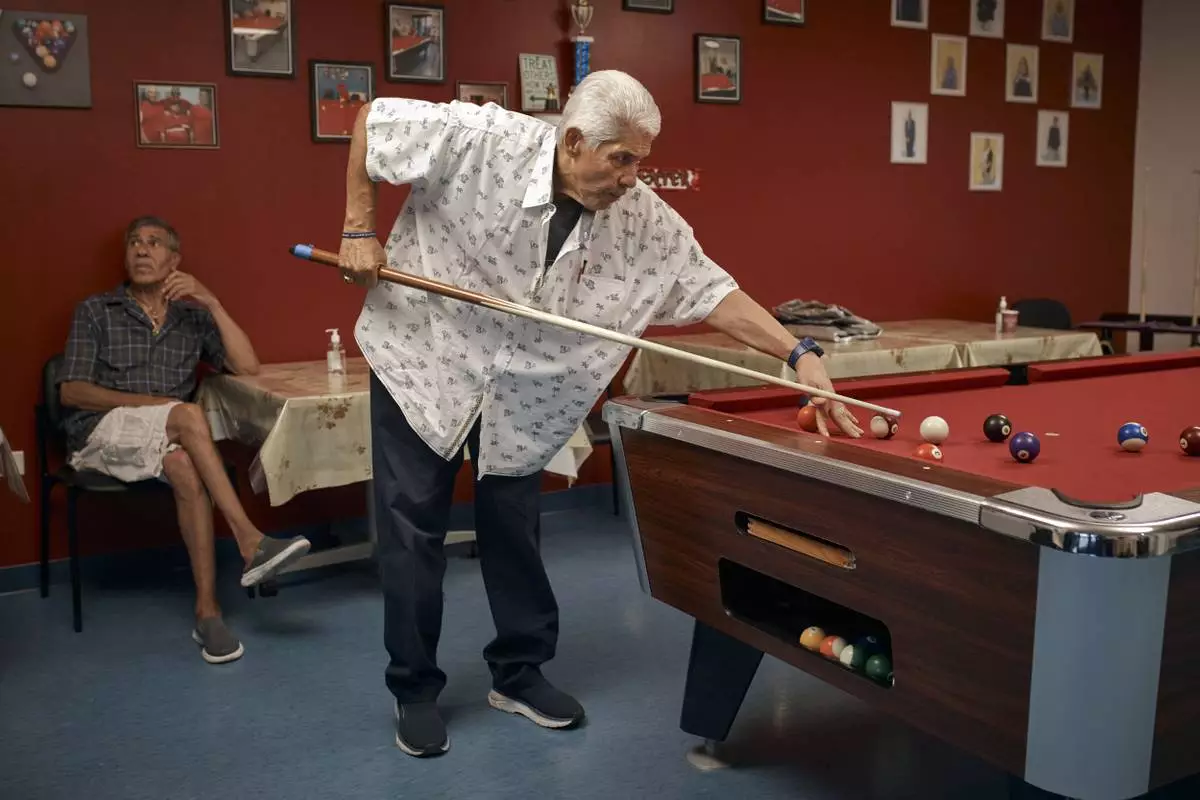
Luis Vazquez, 78, center plays pool with Pedro Navarez, 67, left, at a cooling center during a hot day, Friday, June 21, 2024, in the Bronx Borough of New York. The heat isn’t just uncomfortable. It’s the top cause of weather-related fatalities nationwide, quietly killing an average of 350 New Yorkers each year, according to a city mortality report.(AP Photo/Andres Kudacki)
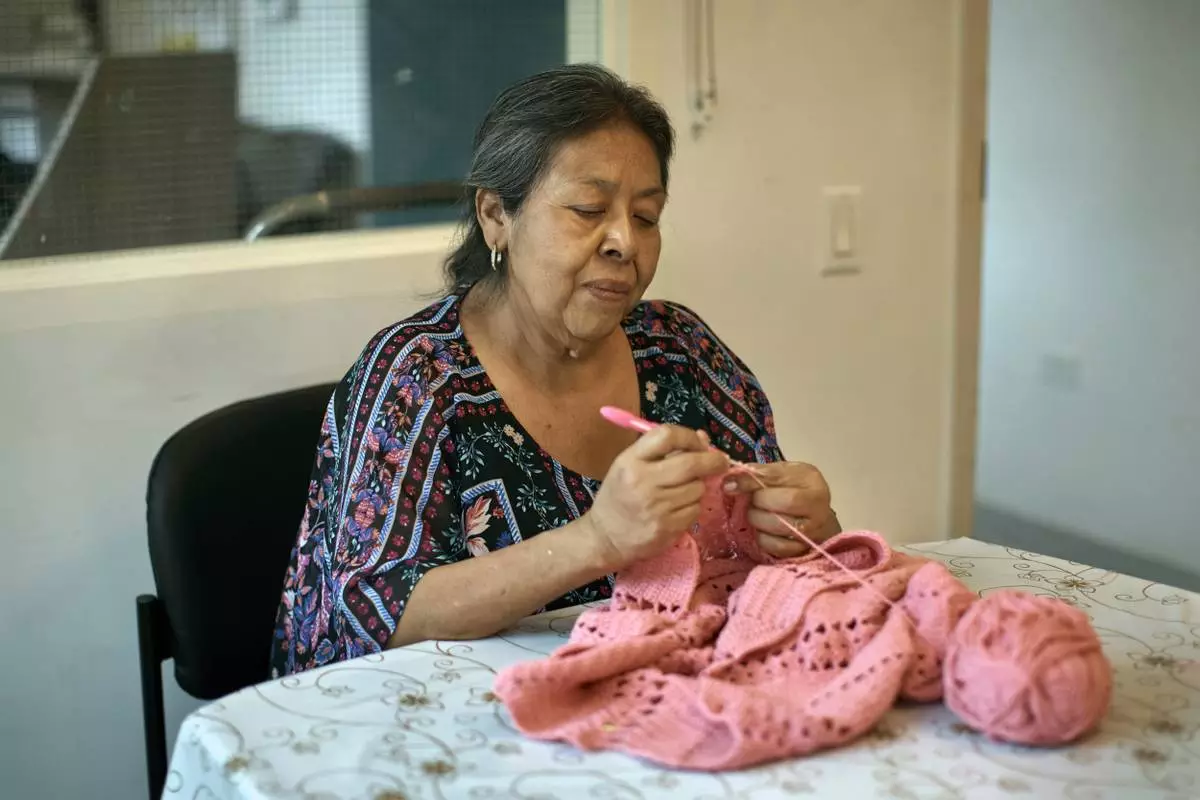
A woman knits inside a cooling center during a hot day, Friday, June 21, 2024, in the Bronx Borough of New York. The heat isn’t just uncomfortable. It’s the top cause of weather-related fatalities nationwide, quietly killing an average of 350 New Yorkers each year, according to a city mortality report. (AP Photo/Andres Kudacki)

People wait for the train on a hot day, Friday, June 21, 2024, in the Bronx Borough of New York. Tens of millions of Americans are facing major heat waves, with temperatures consistently exceeding 90 degrees (32 degrees Celsius). (AP Photo/Andres Kudacki)
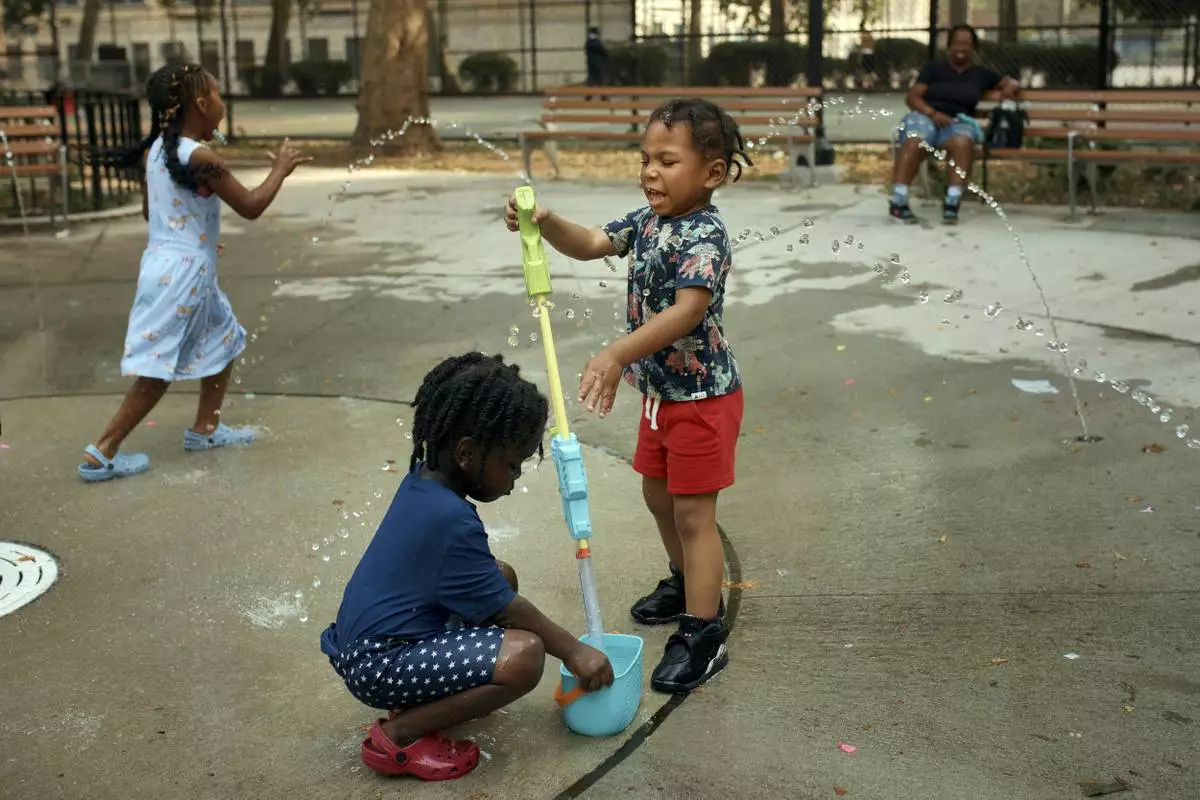
Children play in a water park on a hot day, Friday, June 21, 2024, in the Bronx Borough of New York. Tens of millions of Americans are facing major heat waves, with temperatures consistently exceeding 90 degrees (32 degrees Celsius). (AP Photo/Andres Kudacki)


